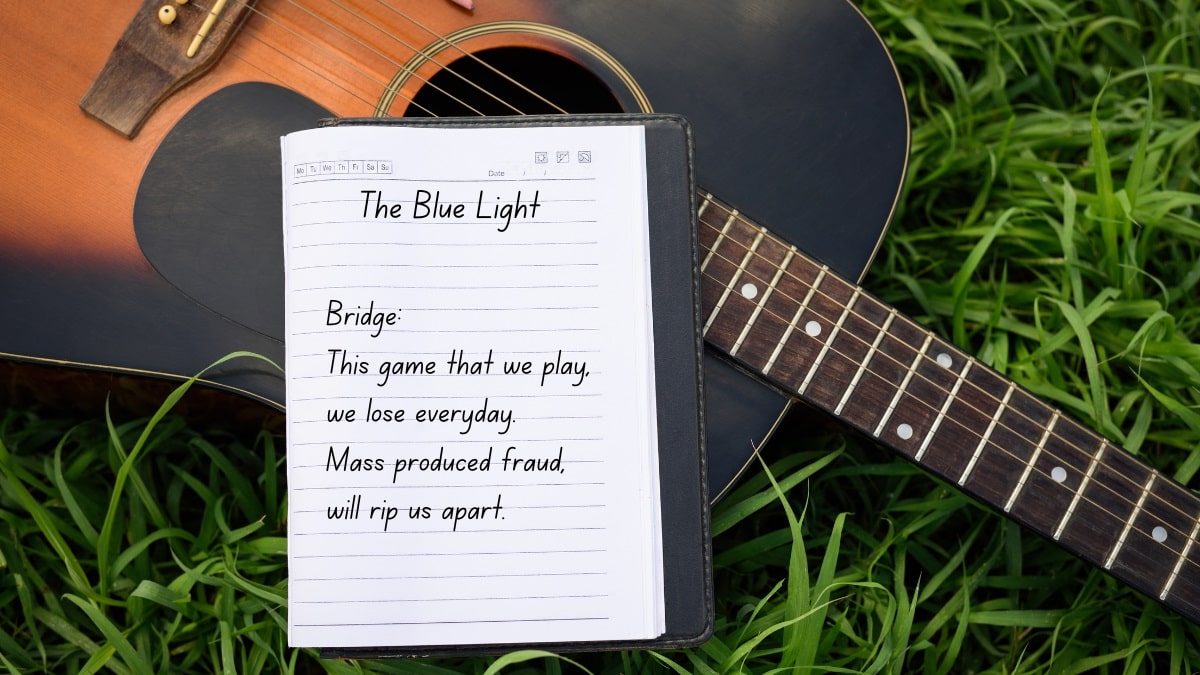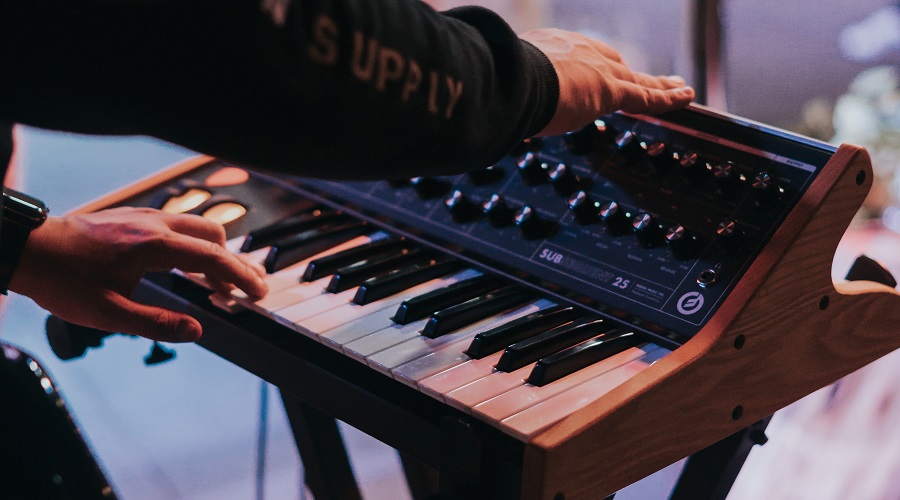Do you ever hear a song and somewhere along the way you think to yourself “that’s my favorite part!” What is it about this part that you really like?
Personally, the best part about any song is the bridge. It’s the unsung hero that gives harmony and creates a whole from separate parts.
Let’s find out what is a bridge in music and why it is so powerful.
What Is a Bridge In Music?
A bridge is a tool for contrast. It helps break down the monotony of repetitive sections and allows them to pop out. The contrast comes from a faster pace, higher note, or a different instrument altogether.
Most commonly, the bridge separates the verse and the chorus. In some cases, it can also separate two verses or two chorus sections.
Verses, Chorus, and Bridges: What’s All That About?
For songwriters, it’s crucial to know all the different parts that make up a song. There are a lot of sections that can be used occasionally. There’s the intro, verse, pre-chorus, chorus, bridge, solo, and outro.
However, the top three that you’ll come across in most sections are the verse, chorus, and bridge.
Before we dig into the details of bridging, let’s see what each section adds to the song:
The Verse

If the bridge is a palette cleanser, the verse is the main dish. It’s the core of the song and every other part serves to make it sound better.
The verse is judged by its content. It has the heaviest lyrics and the best audio quality.
A good verse delivers your message or emotion loud and clear. That usually means that successful verses are all about the lyrics.
The Chorus
The chorus (also called the refrain) is there to add catchiness. Call it a dessert if you wish. It’s the most audibly pleasing part of the song.
It’s also the most exaggerated aspect. If the song has happy vibes, you get a very bubbly chorus and vice versa!
The chorus also has that “hook” that gives the song a unique touch. In most cases, the hook is the title itself. Usually, when songs go viral, it’s because of the chorus.
Think of The Village People’s YMCA or Bee Gees’ Stayin’ Alive. You can almost hear the hum “Ah, ah, ah, ah, stayin’ alive, stayin’ alive” already! That’s a successful chorus.
The Bridge
The bridge is less about content and more about transitions. The bridge might also be referred to as the “middle eight” section.
That’s because in the song from “AABA” the bridge is the B segment. In this form, each segment is made up of 8 bars, with a total of 32 bars.
But that’s not the only way to insert a bridge, though. Depending on the song form, there’s a bunch of possible bridge placements (more on that later!)
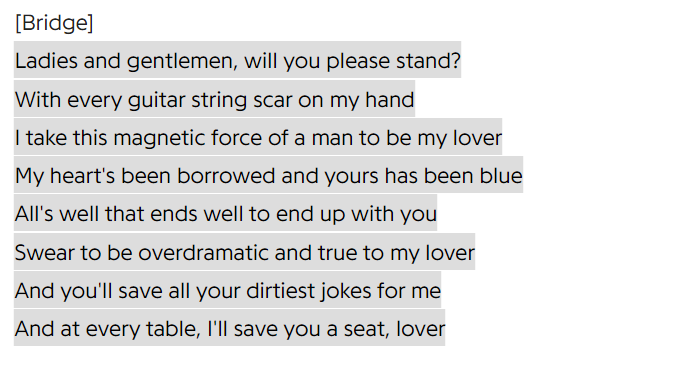
People often underestimate the importance of a well-written bridge. That’s probably because there isn’t a set criterion for a successful bridge. It just helps merge parts and bring out the best in each section.
Lately, we’ve been seeing how a bridge can capture the audience in online trends. Apparently, Taylor Swift’s bridges are going viral on TikTok. Maybe more people are starting to see the importance of a bridge?
The Importance of Bridges In Songs
Some people find the chorus to be the best part of a song. It’s catchy and fun, I’ll give it that.
However, the bridge is still something else. It’s like a rogue agent in a song and it breaks the monotony. Without it, the song would be dull.
Here’s a list of the most common uses of bridges:
- Create dynamic variations in melody or key
- Build intensity or release tension
- Shift emotions either subtly or dramatically
- Connect contrasting sections (highs and lows)
- Filler to extend duration without repetition
How to Write a Successful Bridge
Building musical bridges isn’t a “one size fits all” kind of a thing. It’s very flexible in terms of placement, changes, duration, and intensity.
There are a few factors to keep in mind when writing a bridge for a song: where to put the bridge, what the bridge is made up of, and how intense it should be.
Perfect Placement: Where to Put the Bridge?
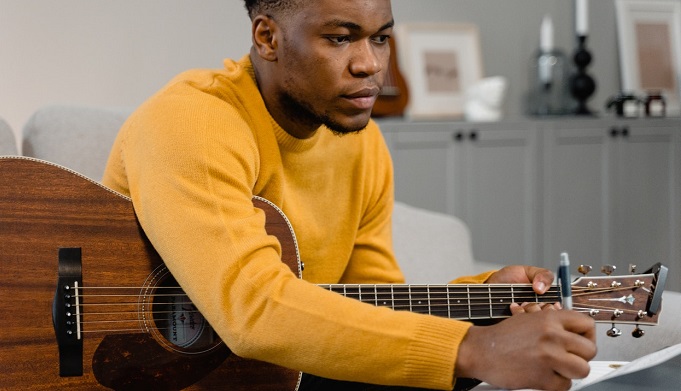
There isn’t one hard-and-fast rule for the “perfect bridge placement.” For every song form, there’s a spot that’s commonly reserved for the bridge.
- ABABCB: verse – chorus – verse – chorus – bridge – chorus
- ABACABA: verse – chorus – verse – bridge – verse – chorus – verse
- AABA: verse – verse – bridge – verse
If you notice one thing that’s shared in common in all these song forms, it’s that the bridge is never the last section. Not to end on a bridge is probably the only rule there is to bridge placement.
Bridges connect parts. Don’t leave your audience hanging there at the end, it’ll feel like your track is incomplete. Kind of like stopping mid-sentence.
Similarly, you won’t find a song that starts on a bridge.
Dynamic Change: What’s Different About the Bridge?
Once you know where you want the bridge to be, it’s time to figure out what your bridge looks (or sounds?) like.
The “rogue” aspect in the bridge might be any change in the song dynamics. Here are a few examples of what you can change in the bridge.
Key
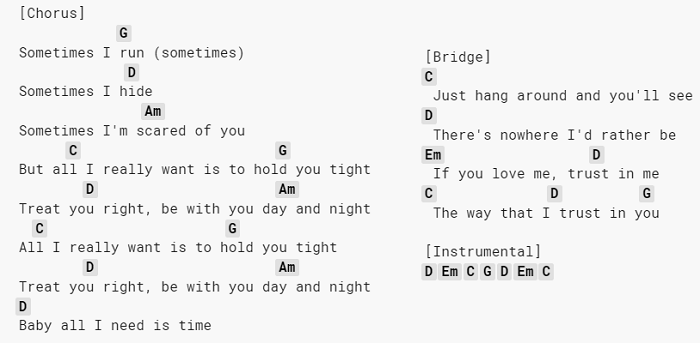
A technique called the crowbar modulation used to be one of the most common ways to pump up the key for a bridge.
In Livin’ on a Prayer by Bon Jovi, the key goes up a minor third. Britney Spears also does this in her hit song Sometimes.
For some reason, this technique is also called the “truck driver’s gear shift” and it’s very common in songs from the 80s.
Tempo
If you’ve ever heard The Arctic Monkeys’ hit Why Do You Only Call Me When You’re High, you’ve heard a high-tempo bridge.
It’s brilliant how this spur of excuses conveys devastation. It even gives away to the burst that comes next.
Melody
Copycat by Billie Eilish has a very cut-clear change in melody where she fades into a slow piano bridge.
However, what you’re hearing here is actually a three-way bridge. It’s a change in melody, instrument, and pace. That’s good proof that building bridges is very flexible in a lot of cases.
Instruments
Using drums in a high rhythm is a great way to build up tension in a bridge.
Other artists may fade the drums out to create a soft transition from an intense chorus and into the bridge. The song Blame by Calvin Harris has that intensity fade out.
Lyrics

Bridges can be vocal, too. Even the slightest change in pronouns or sentence structure can make all the difference.
It might seem like lyrics alone wouldn’t be enough, but it is. Don’t just take our word for it, check out Christina Aguilera’s lyrical bridge in Beautiful.
You don’t have to limit yourself when you’re bridging. Mix and match between lyrics, chord progression, and tempo. Trust your instincts and have fun with the dynamic shift.
Duration: How Long Is the Bridge?
Bridges are called the “middle eight” for a reason. In AABA songs, the bridge lasts for 8 bars, just like any other section.
However, it’s not uncommon to see a bridge that’s only four bars long. Hip-hop songs usually have a shorter bridge. Probably because the tempo demands shifting quickly from one section to the other.
Transitioning Intensity: How Strong Is the Bridge?
Decide if you want a bold bridge or a smoother transition. There are no wrong choices here.
Softer bridges usually connect a pre-chorus to a chorus. They only serve to provide a very subtle transition. They can also release tension after a heavy chorus. It’s all about the balance, after all.
Key bridges are mostly bold and hard to miss. One example that we mentioned earlier was Britney Spears’ Sometimes.
Flow
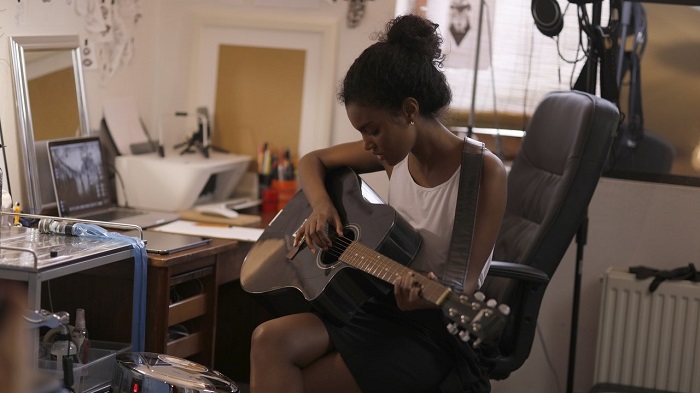
Sure, there’s a technical aspect to it, but that’s not all. It also takes a certain talent, and we have full trust in your musical ear!
In the end, you’ll have to try a couple of styles out before you hit the one. A good bridge is a subtle one but makes everything around it pop. Check the flow, if you like what you’re hearing, keep going.
The History of Musical Bridges
Musical bridges were first used by German Meistersingers (singers, poets, and composers) as early as the 15th century.
The Steg really gained popularity under the hand of Alfred Lorenz in the 1920s. That’s because Lorenz was interested in neo-medieval operas that used bridges.
During the Second World War, many creatives fled Germany. The influx of German musicians into America helped spread the concept of a musical Steg even further. Thanks to Hollywood, it didn’t take long before the whole world knew about the Steg.
Bridges in Pop Music
Most pop songs get that “singability” factor from a catchy chorus. You should expect a structure with more chorus repetitions. The bridge’s role here is to build momentum for the next chorus.
In fact, some Pop artists will use a two-way chorus, Beyonce’s Single Ladies is a good example of that.
Other artists will pump up the contrast between the chorus and the bridge. Hear the vivid contrast in note and volume in Miley Cyrus’ hit, Wrecking ball.
Songs Without Bridges
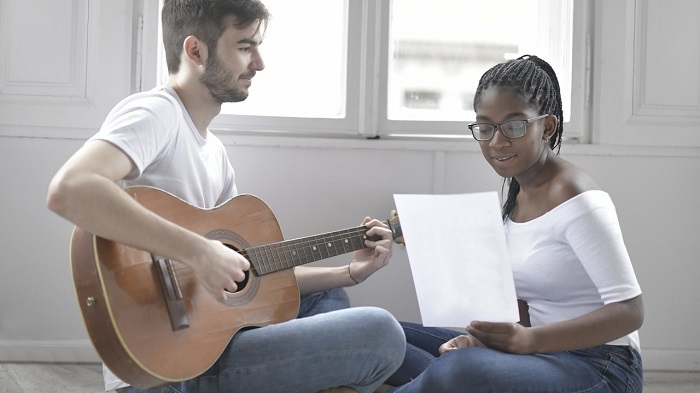
Okay, so bridges are important, they matter, etc. Is there any possible way you can make a full song without a bridge?
Short answer: You can have a song that has no clear bridges.
Before you rush into saying that a song doesn’t have a bridge, remember that bridges can be extremely subtle. Even the slightest change in the note can give way to the next chorus or verse.
However, if you want to hear some tracks that are bridgeless, here’s a list to check out:
Queen’s Bohemian Rhapsody
Some might argue that this doesn’t count, since Bohemian Rhapsody breaks so many “norms” in the typical song structure.
The song doesn’t have one chorus, or even three or four. It has six! Do you even need a bridge at that point?
The Beach Boys’ Here Comes The Night
This one’s an AB song. That means that it’s just a verse and chorus on repeat, no bridges to spot anywhere.
Justin Bieber’s Sorry
If you listen to the pop hit, you’ll notice that it has a verse-chorus pattern on repeat, as well. That’s not Bieber’s signature move, though. A lot of his songs follow the regular 32 bar structure.
Bob Dylan’s … Everything?
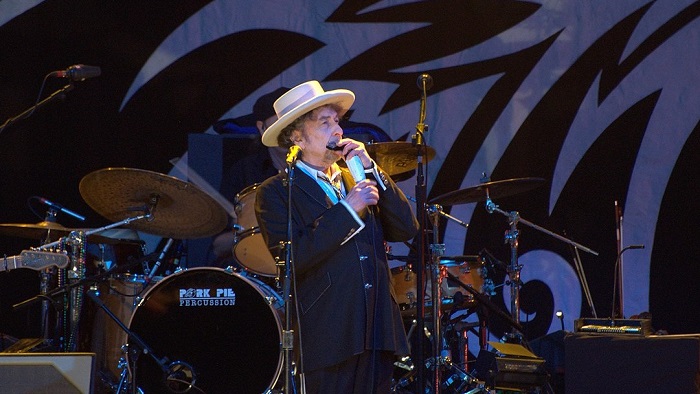
Bob Dylan is truly an icon. Instead of naming the Bob Dylan songs without chorus, it’d probably be easier to name those with a bridge.
In fact, Dylan often ditches the chorus too. Some of his songs are just pure verses; just one main dish after the other.
That’s the repetitive AAA form. Thing is, he does it so perfectly!
Highlands and Subterranean Homesick Blues are two of those songs if you want to check them out.
How to Write a Song Without a Bridge
Sometimes, a songwriter will want nothing to do with a bridge. Maybe it’s for brevity’s sake.
Or maybe the flow is just off. Anyhow, you’ve got to respect the creative process, right?
There’s a bunch of tricks to keep up your sleeve for moments like this:
Add an Earth-Shattering Solo
If you have a great solo guitarist in your band, now is their time to shine. Replace the traditional bridge with a guitar solo.
Many A-list artists are doing it, why shouldn’t you? Let your inner 60’s child run wild!
Spice Up the Chorus
A great chorus is hard to come by. If you feel like you have a great thing going on with your chorus, try to repurpose it. Alter it and reuse it instead of writing an entirely new bridge segment.
Do the Bob-Dylan
Bob Dylan relies heavily on the verse segments to carry the main weight. Whenever you feel like your lyrics are sturdy enough to be a stand-alone, ditch the bridge. Let your words do their magic.
